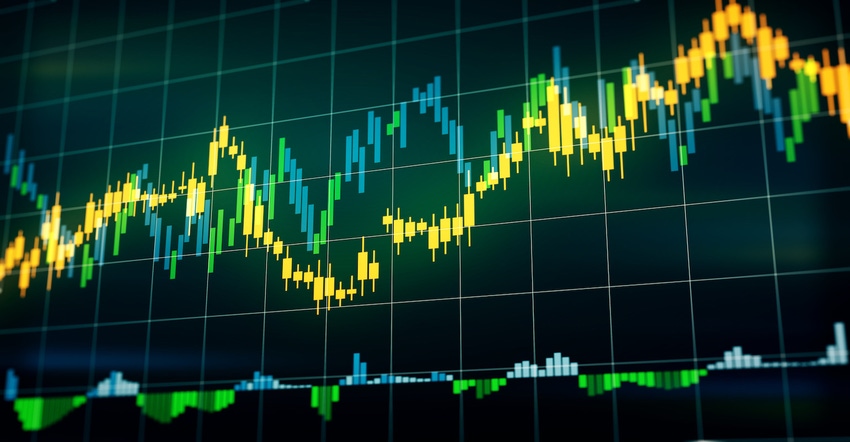Weekly Resin Report: As Resin Prices Slide, Tipping Point May Be at Hand
Commodity-grade resin prices drop across the board, but processors are flush with on-site inventories and can afford to be patient, waiting for the best possible deals.
September 28, 2021

Despite commodity-grade resin prices dropping across the board the week of Sept. 20, spot trading activity slowed considerably. The PlasticsExchange suspects that many processors previously increased their on-site resin inventories as a physical hedge against supply disruptions, thus limiting their current spot needs. As downstream demand slackens, upstream supplies continue to bulge and the tipping point could finally be at hand, reports the resin clearinghouse in its Market Update.
Houston warehouses are starting to fill up and export asking prices have begun to slide. Some nicely discounted domestic railcars also were seen in the market. As long-term elevated prices erode, it encourages buyers to be more patient and willing to wait for the right offer to be presented. The easing price trend has also diminished the strength of September contract price initiatives for polyethylene (PE) and polypropylene (PP), both of which are unlikely to confirm, according to the PlasticsExchange. It adds the caveat, however, that the hurricane season is in full swing and that processors should proceed with caution.
Resin imports have served as a relief valve to supplement insufficient PP and high-density (HD) PE supplies, but they have slowed dramatically over the past couple of months. Importer incentives have been greatly reduced by long shipping delays, massive increases in ocean freight, and escalating port-related costs, which can add around $0.35/lb to delivered resin cost. Reduced shipments continue to sail toward US shores, but significant delays remain, notably on the West Coast where there is a record buildup of ships outside the Los Angeles/Long Beach ports.
Below-average PE trading leads to further price erosion
PE trading volumes were below average last week, as padded inventories and a loss of appetite for spot resin led to further price erosion, as was expected. HDPE Blow Mold and Injection, the most difficult grades to procure this year, were the primary movers during the week, indicating looser availability but still good demand. Blow and Injection maintained premiums to other high-molecular-weight Film; low-density (LD) and linear-low-density (LLD) PE resins also slipped a couple of cents. Film grades have generally been more abundant and easier to source. Although PE pricing was further removed from record highs set earlier in the year, it remains at historically high levels. The downed units in Texas are coming back online following Hurricane Nicholas. A few PE producers remain on force majeure, several PE units are offline in the aftermath of Hurricane Ida, and maintenance outages are still planned in Q4.
Given the decline in spot prices, September PE contracts appear to be settling flat for the second month in a row. Producers will give the nickel increase another try in October, writes the PlasticsExchange.
PE producers have been pushing for another nickel increase since August; contracts increased $0.41 to 0.43/lb since the beginning of 2021, and a total of $0.65 to 0.67/lb since the market bottomed in May 2020, including the last successful $0.05/lb increase, implemented for July contracts.
Upstream PP inventories at robust levels
Spot PP prices dropped amid light demand and continued growth in material availability. There was a relatively heavy flow of off-grade homo- and co-polymer PP railcars available. Packaged truckload offers were less prevalent, but still available as the reseller community actively sheds inventories. Considering that upstream inventories have returned to robust levels, producers remain hesitant to release too much material into the market, which could erode expanded margins secured during the great supply/demand imbalance. Producers are also holding back inventories as a precaution during the ongoing hurricane season, lack of imports, and volatile PGP costs.
In the meantime, another PP producer joined the collective push for a nickel margin-enhancing increase in September, as a handful of companies remain on force majeure, but implementation is doubtful. PP contracts have increased $0.57/lb in 2021, and a total of $0.885/lb since the market trough in May 2020. August PGP contracts were up $0.11/lb to $0.87/lb, and with spot monomer prices coming under pressure, transacting in the lower $0.80s/lb, the PlasticsExchange expects September PGP contracts to slide a few cents.
Read the full Market Update, including updates on PGP pricing and energy futures, on the PlasticsExchange website.
About the Author(s)
You May Also Like


